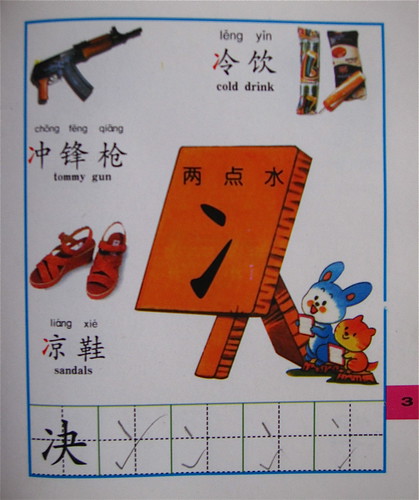
Here at Slow Boat Central, three-fifths of us are now deep into the process of learning our Hanzi (Chinese characters). Xander is, of course, now in the first grade, which for Chinese students is the beginning of a six or seven year Long March to master a good portion of the ten to twenty thousand of the characters that are out there. This fall, Jane, in addition to teaching three classes, is also an official part-time student, studying Chinese for foreigners three days a week at a university on the west side of Chengdu. After a year of ignoring Chinese writing as much as possible, she's now biting the bullet and making Hanzi flashcards as well. (Me, I've been plugging away at them for the last year now - I'm kinda geeky that way.)
Of course, the Hanzi learning process bears very little resemblance to the "A is for Apple" routine that us Latinate alphabet users have to figure out in Kindergarten. The main difference, besides scale, is phonetics. While many Hanzi have phonetic elements built in, the main emphasis in the beginning is learning strokes and radicals, which are small symbols that you combine together to make more complicated characters.
The radicals usually, but not always, give you a clue to the meaning or pronunciation of the character in question, which leads to some strange juxtapositions in elementary textbooks. For example, what better way to learn the "ice" radical, pictured above, than to learn the words for cold drinks, sandals (literally, "cool shoes"), and ... tommy gun? Not the first image that I'd choose to educate my first grader, but then again, once you strip away the phonics, an alligator munching on an apple doesn't make much sense either.
Other strangely poetic combinations that I ran across:
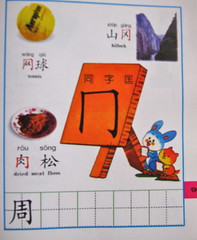
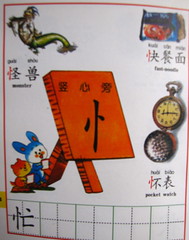
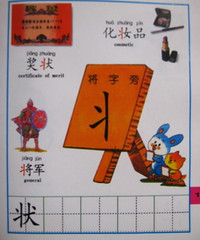
- Tennis, hillock, dried meat floss
- Monster, fast-noodle, pocket watch
- Certificate of merit, cosmetic, general
- Guard, seal, measuring tape
- Casket, doctor, horse (my favorite, because the doctor looks so mean)
- Drawing, rope skipping, toilet paper
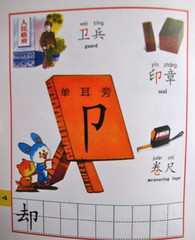
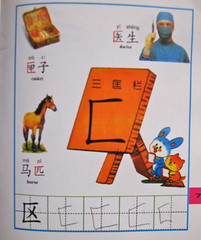
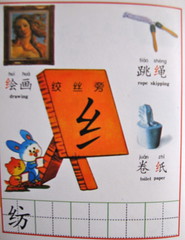
How do we create meaning in the world? One way, it seems, is by making connections between random objects, and then going on from there.
No comments:
Post a Comment